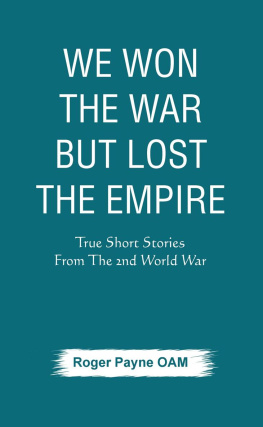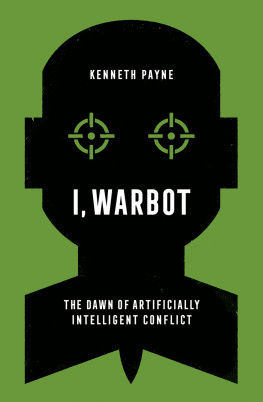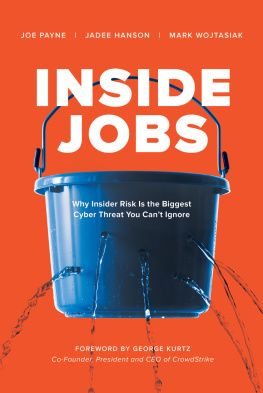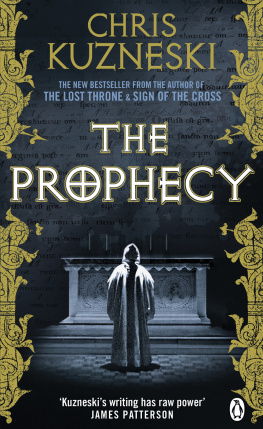Payne Kenneth - I, Warbot
Here you can read online Payne Kenneth - I, Warbot full text of the book (entire story) in english for free. Download pdf and epub, get meaning, cover and reviews about this ebook. year: 2021, publisher: Hurst Publishers, genre: Romance novel. Description of the work, (preface) as well as reviews are available. Best literature library LitArk.com created for fans of good reading and offers a wide selection of genres:
Romance novel
Science fiction
Adventure
Detective
Science
History
Home and family
Prose
Art
Politics
Computer
Non-fiction
Religion
Business
Children
Humor
Choose a favorite category and find really read worthwhile books. Enjoy immersion in the world of imagination, feel the emotions of the characters or learn something new for yourself, make an fascinating discovery.
- Book:I, Warbot
- Author:
- Publisher:Hurst Publishers
- Genre:
- Year:2021
- Rating:4 / 5
- Favourites:Add to favourites
- Your mark:
- 80
- 1
- 2
- 3
- 4
- 5
I, Warbot: summary, description and annotation
We offer to read an annotation, description, summary or preface (depends on what the author of the book "I, Warbot" wrote himself). If you haven't found the necessary information about the book — write in the comments, we will try to find it.
I, Warbot — read online for free the complete book (whole text) full work
Below is the text of the book, divided by pages. System saving the place of the last page read, allows you to conveniently read the book "I, Warbot" online for free, without having to search again every time where you left off. Put a bookmark, and you can go to the page where you finished reading at any time.
Font size:
Interval:
Bookmark:

KENNETH PAYNE
The Dawn of Artificially Intelligent Conflict

HURST & COMPANY, LONDON
First published in the United Kingdom in 2021 by
C. Hurst & Co. (Publishers) Ltd.,
83 Torbay Road, London NW6 7DT
Kenneth Payne, 2021
All rights reserved.
Printed in Scotland
The right of Kenneth Payne to be identified as the author of this publication is asserted by him in accordance with the Copyright, Designs and Patents Act, 1988.
A Cataloguing-in-Publication data record for this book is available from the British Library.
ISBN: 9781787384620
This book is printed using paper from registered sustainable and managed sources.
www.hurstpublishers.com
For Stephen Hare and Stephanie Jones
There is a play of possibilities, probabilities, good and bad luck, which makes war of all branches of human activity the most like a game of cards.
Carl von Clausewitz, On War, 1832
We tried everything we could and it was just too strong.
Elite poker player Jason Les, defeated by Libratus AI, 2017
AI is going to war. From the chaos of battle to the quiet hum of headquarters far from the action, intelligent machines are about to change conflict forever. Rapid advances in Artificial Intelligence are disrupting manufacturing, healthcare, transport, finance, retail and more. Now theyve begun to transform the equipment and techniques of modern warfare. Whether its combat droids dogfighting far overhead or AI advising politicians and generals, we are on the cusp of artificially intelligent warfare. Russias Vladimir Putin reckons that whoever leads in AI will rule the world. Its just possible, I suppose, that hes not thinking about war.
Weapons that can think for themselves and respond to changes in their environment are hugely valuable. They spare the lives of our own soldiers and they will soon deliver better performance than crewed systemsshooting accurately and manoeuvring swiftly. Perhaps thats why theres always been a close connection between AI research and the military, one that continues today. Its not just about weapons. AI is a decision-making technology, which certainly makes it useful for weaponsfor uninhabited tanks, aircraft and ships, and guided missilesbut also for strategy, the thinking part of warfare, where commanders weigh what to do. In battle we want warbots that will outperform the enemy. Speed and accuracy of decision-making are imperative, and AI is blisteringly quick. Much faster certainly than humans: already an algorithm has repeatedly outclassed an experienced fighter pilot experienced fighter pilot in simulated aerial combat.
Strategy, however, calls for different qualities. Not for nothing are countless books called the art of war. Creativity, imagination, guileall are valued attributes. Strategy requires good judgment, even though there are innumerable variables interacting simultaneously. Astute strategists strive to understand what the enemy is thinking. Should we escalate? How much force will it take to deter an attacker? These are harder, less tightly bounded decisions than those facing the AI fighter pilot, or even the networked system that controls a swarm of them. Here too, though, modern AI has an important part to play in conflict, and its one that will only grow in the near future. All of which is making many observers uneasy. Can we trust machines to wage war? Can we afford not to? What chance is there of regulating warbots, intelligent warfighting machines, especially in view of Putins disturbing comment?
If its boom time for AI, its also boom time for writing about AI, including in war. And yet there have been vanishingly few attempts to seriously engage with the military impact of Artificial Intelligence. Much attention in discussions of warbots focuses on capabilities of individual platforms and technologiesthe drones or missiles, the high-definition cameras and algorithms that monitor themrather than the ways theyll be employed together and their deeper impact on warfare. Instead, most public discussion of military AI majors on whether autonomous weapons should be banned altogether. While that is a serious question, which well consider too, it often floats free of a larger discussion about why states want to acquire such weapons in the first place, and how they intend to employ them.
The central argument of this book is new thinking is required for a new era of AI weapons. In itself, that might not be a novel argument; indeed you can read similar claims in many thinktank reports and newspaper op-eds. But the analysis typically stops there, caught up in discussion of unethical killer robots or the latest privacy-invading facial recognition algorithm.
Whats sorely needed is a deeper understanding of the military possibilities that modern AI allows, and also its limitations. These in turn should be firmly grounded in the cultural history of AI development. Technology isnt just out there, somehow emerging from the ether to transform warfare, but is imagined and then created by actors whose perspectives are shaped by their experiences. And theres another aspect to consider carefully: the psychological essence of military activity. AI is a decision-making technology, rather than a weapon. To my mind, thats precisely what makes it such a radical propositionfor the entirety of our existence as a species, we humans have decided the issues about which we fight, and the ways in which we go about it. Tactics in battle and strategy ahead of it are both intimately connected to our biological minds. That is no longer entirely truenow decisions about using force are being made by other means. Grasping the distinction between human and AI decision-making is essential for understanding how conflict will be shaped by the advent of sophisticated warbots.
And so, in successive chapters, well first explore the ways in which Artificial Intelligence and war have acted on one another, from the very beginning at Bletchley Park in the Second World War through to the present day. Then well look ahead to the battlefield of the near future. Its an environment where todays AI will be extremely usefulits relentlessness, accuracy and speed of decision-making are invaluable assets. AI will prompt the invention of new equipment, and the development of new concepts through which these might be used. Why have a big, heavily armoured tank when theres no crew to protect and when you can target the enemy with missiles fired with pinpoint accuracy from hundreds of miles away? Why risk a huge, lumbering aircraft carrier, just to project a handful of strike aircraft against enemy targets, when a drone swarm can be launched from an unmanned submarine patrolling offshore?
Next well turn to the bigger picturethe way in which the action is coordinated at the strategic level. AI might now be brilliant at chess, but no board game is anything like as complex as military strategy. Still, there are reasons to suspect that in the near future AI will have a significant role in decision-making at the strategic level too. And then well return to the issues of control, ethics and regulationto the challenge of making sure that our warbots serve us faithfully, and that we in turn deploy them responsibly. Equipped with a deeper understanding of where warfighting AI comes from and what it offers, we should be better placed to address the issues that rightly concern those campaigning to ban warbots.
Font size:
Interval:
Bookmark:
Similar books «I, Warbot»
Look at similar books to I, Warbot. We have selected literature similar in name and meaning in the hope of providing readers with more options to find new, interesting, not yet read works.
Discussion, reviews of the book I, Warbot and just readers' own opinions. Leave your comments, write what you think about the work, its meaning or the main characters. Specify what exactly you liked and what you didn't like, and why you think so.












